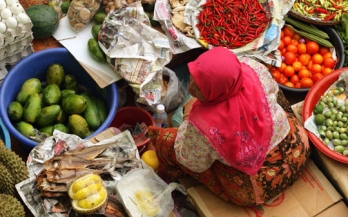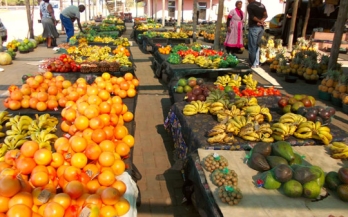New cost-effective tool for monitoring diets uses data from 41 countries to show vast gaps in diets
Gallup, Harvard University, and the Global Alliance for Improved Nutrition (GAIN) have today published a new report on diet quality entitled Measuring What the World Eats. It is the first report from the Global Diet Quality Project, with data based on the Diet Quality Questionnaire (DQQ), a standard questionnaire which takes just five minutes to complete. It is a new, rapid, cost-effective method for accurately tracking data about diets and diet adequacy across the world. And the data is actionable and tailored for each country. It can be used to inform how to improve diets.
Diet is a central component of health and wellbeing. However, nearly 90% of countries experience a high level of at least two forms of malnutrition due in part to poor diets, leading to long-term health issues, including nutrient deficiencies and noncommunicable diseases. Food systems that produce our diets also have a large impact on the environment. The result is that unhealthy diets cost an estimated $3.5 trillion per year globally.
Andrew Rzepa, Gallup Partner said, "We all need better diets. But how do we make that happen? The DQQ is game changing: it gives us the detailed information we need to look at diet quality issues at a granular level, meaning we have the data to design interventions that can make a real difference. After all, we can only manage what we can measure."
"The first step to solving a problem is describing it clearly. We knew that diets can be unhealthy in many different ways – these results put data behind it. No country, at no income level, is immune to the effects of unhealthy diets," added Anna Herforth, principal investigator of the project at the Harvard T.H. Chan School of Public Health.
The DQQ is game changing: it gives us the detailed information we need to look at diet quality issues at a granular level.
Nearly 90% of countries experience a high level of at least two forms of malnutrition due in part to poor diets, leading to long-term health issues, including nutrient deficiencies and noncommunicable diseases. © Shutterstock / frank60
The DQQ results provide country-level data that can also be disaggregated by gender, age, urban or rural locality, and socioeconomic indicators. The data underlying this first report were collected in 41 countries, representing two thirds of the world’s population. In more than half of these countries, this was the first nationally representative dietary survey in adults ever done. The DQQ is planned to be administered to 140 countries in the future.
We knew that diets can be unhealthy in many different ways – these results put data behind it.
Key insights from the data:
- The majority of the people worldwide are not consuming diets that would even minimally adhere to dietary guidelines. This is typically worse in rural areas in low- and middle-income countries.
- Populations that consume more healthy foods also tend to consume more unhealthy foods. This means that all populations are at high risk for diet-related noncommunicable diseases.
- In many low- and middle-income countries the majority of women are not getting the diverse diets they need, increasing their risk for vitamin and mineral deficiencies and related health issues. The problem is higher in rural areas and among poorer women.
- Men and urban residents consume more unhealthy foods and fewer foods that protect their health. This pattern is driven by higher consumption of soft drinks, processed meats, and deep-fried foods among men than women and among urban residents than rural residents.
Lawrence Haddad, GAIN’s Executive Director said, "It is particularly important that we understand what is happening to diets in low- and middle-income countries in Africa and Asia. With this fast, cheap, accurate measurement tool, we can now track progress. The richness of this new data means we can work with governments, the food industry, and other NGOs to build tailored strategies to improve dietary diversity, fortification, and supplementation. This is essential to reduce undernutrition and diet-related noncommunicable diseases and their widespread consequences."
The DQQ examined six core diet quality indicators:
- Micronutrient adequacy
- Food group adequacy
- Dietary factors protective against noncommunicable diseases
- Risk factors for noncommunicable diseases
- Consumption of no fruits or vegetables
- Consumption of sugar-sweetened soft drinks
Each country was given a score for each indicator.
The 41 countries included in this first report are:
Bangladesh, Benin, Bolivia, Burkina Faso, Cambodia, Cameroon, Chile, China, Colombia, Ecuador, Egypt, Gabon, Ghana, Greece, India, Indonesia, Israel, Jordan, Kazakhstan, Kenya, Laos, Lebanon, Mexico, Morocco, Mozambique, Nepal, Nicaragua, Nigeria, Pakistan, Philippines, Russia, Senegal, Sierra Leone, South Africa, Sri Lanka, Tajikistan, Tanzania, Turkey, Uganda, United States of America, and Viet Nam.
The richness of this new data means we can work with governments, the food industry, and other NGOs to build tailored strategies to improve dietary diversity, fortification, and supplementation.
Videos



